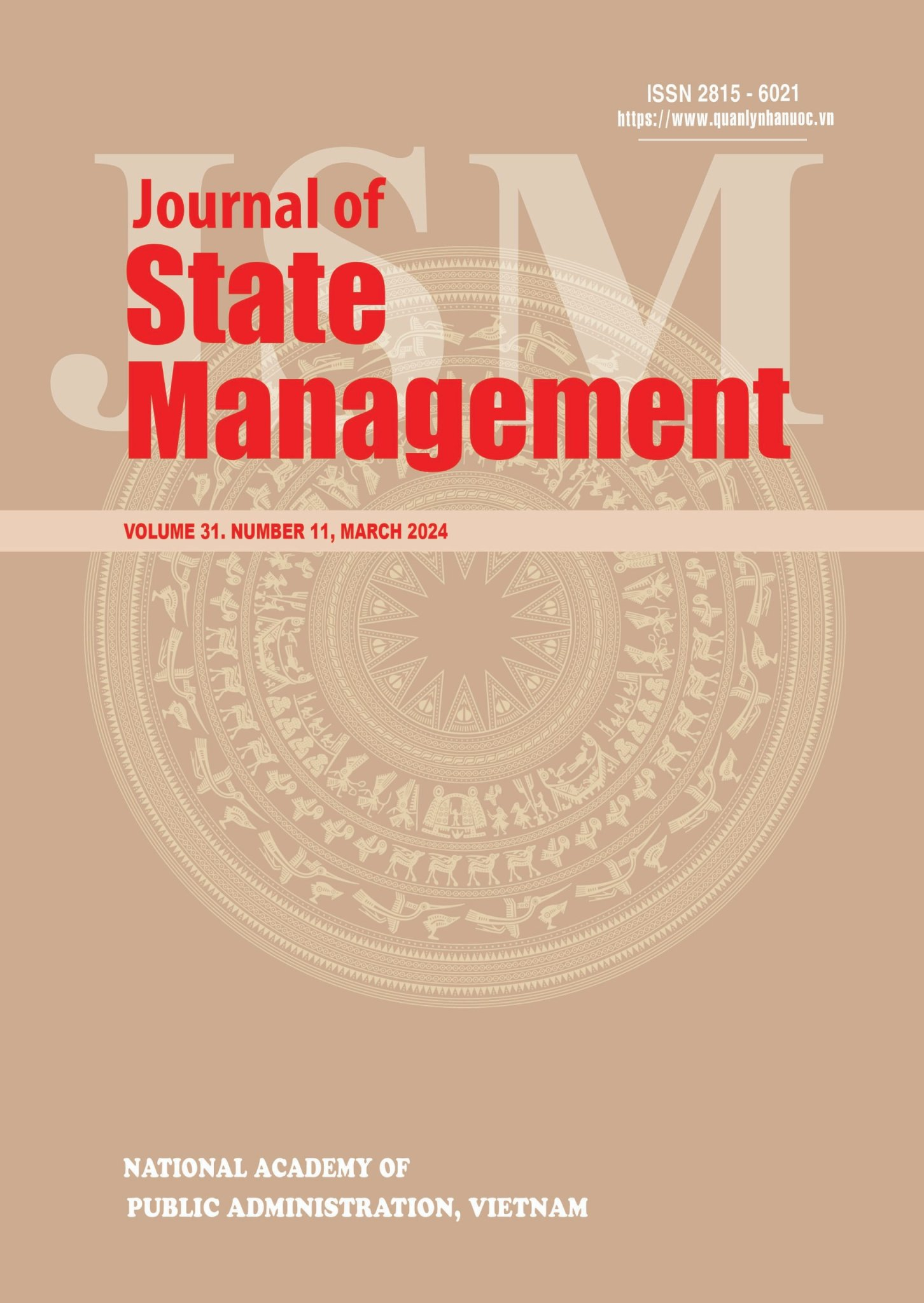Organizational innovation management in the context of digital transformation
DOI:
https://doi.org/10.59394/JSM.81Keywords:
Digital transformation, technology integration, innovation, organization, enterprise, sustainable developmentAbstract
The article presents an overview of theory and research on the relationship between digital transformationand innovation in organizations and firms. Digital transformation is the process of integrating technology to create comprehensive changes in organizational operations. In contrast, innovation reflects the capability to implement ideas into implemented solutions that enhance efficiency and competitive advantage. Research indicates that these two factors have a reciprocal relationship: digital transformation fosters innovation, while continuous innovation, in turn, enhances the organization's digital capacity. In the context of Vietnam implementing the National Digital Transformation Program to 2025, with a vision to 2030, the article advances a set of actionable recommendations to support enterprises in improving connectivity and effectively operating the “digital transformation - organizational innovation” model to adapt and develop sustainably.
References
Abernathy, W. J., & Utterback, J. M. (1978). Patterns of industrial innovation. Technology Review, 80(7), 40-47.
Adner, R., Puranam, P., & Zhu, F. (2019). What is different about digital strategyṢ From quantitative to qualitative change. Strategy Science, 4(4), 253-261. Retrieved from https://doi.org/10.1287/stsc.2019.0093
Appio, F. P., Frattini, F., Petruzzelli, A. M., & Neirotti, P. (2021). Digital transformation and innovation management: A synthesis of existing research and an agenda for future studies. Journal of Product Innovation Management, 38(1), 4-20. Retrieved from https://doi.org/10.1111/jpim.12544
Ba, P. L. (2021). Enhancing frugal innovation capability for Vietnamese enterprises: The role of transformational leadership and firms’ knowledge management capability. Journal of Economics and Development, (286), 68-77.
Barney, J. B. (1991). Firm resources and sustained competitive advantage. Journal of Management, 17(1), 99-120. Retrieved from https://doi.org/10.1177/014920639101700108
Chesbrough, H. W. (2003). Open innovation: The new imperative for creating and profiting from technology. Harvard Business Press.
Crossan, M. M., & Apaydin, M. (2010). A multi‐dimensional framework of organizational innovation: A systematic review of the literature. Journal of Management Studies, 47(6), 1154-1191. Retrieved from https://doi.org/10.1111/j.1467- 6486.2009.00880.
Jiménez, D., & Sanz-Valle, R. (2011). Innovation, organizational learning, and performance. Journal of Business Research, 64(4), 408-417. Retrieved from https://doi.org/10.1016/j.jbusres.2010.09.010
Ha, N. T. (2024). Innovation culture and the process of digital transformation in state agencies. State Management Review, (338), 16-21.
Helfat, C. E., & Raubitschek, R. S. (2018). Dynamic and integrative capabilities for profiting from innovation in digital platform-based ecosystems. Research Policy, 47(8), 1391-1399. Retrieved from https://doi.org/10.1016/j.respol.2018.01.019
Helfat, C. E., Kaul, A., Ketchen Jr, D. J., Barney, J. B., Chatain, O., & Singh, H. (2023). Renewing the resource- based view: new contexts, new concepts, and new methods. Strategic Management Journal, 44(6), 1357- 1390. Retrieved from https://doi.org/10.1002/smj.3461
Ministry of Planning and Investment. (2023). Annual report on digital transformation of Vietnamese enterprises: Promoting digital transformation and green digital transformation.
Pereira, M. S., Cardoso, A., Sá, J. C., Magalhães, M., & Faria, S. (2022). Digital transformation in organizations and its impact on knowledge management: A quantitative study. In Implementing Automation Initiatives in Companies to Create Better-Connected Experiences (pp. 1-13). IGI Global. Retrieved from https://doi.org/10.4018/978-1-6684-3648-2.ch001
Politburo. (2024). Resolution No. 57-NQ/TW dated December 22, 2024, on breakthroughs in the development of science, technology, innovation, and national digital transformation.
Schumpeter, J. A. (1983). The theory of economic development: An inquiry into profits, capital, credit, interest, and the business cycle (Vol. 55). Transaction Publishers.
Teece, D. J. (2007). Explicating dynamic capabilities: The nature and micro foundations of (sustainable) enterprise performance. Strategic Management Journal, 28(13), 1319-1350. Retrieved from https://doi.org/10.1002/smj.640
Teece, D. J., Pisano, G., & Shuen, A. (2007). Dynamic capabilities and strategic management. In Knowledge management: Critical perspectives on business and management (Vol. 2, pp. 234). Routledge. Bo, T. D., Tho, N. D., & Trong, N. D. (2025).
Theoretical issues in developing digital human resources to meet the requirements of digital transformation in the current period. Journal of Science Research and Development, 1-9.
Urbinati, A., Manelli, L., Frattini, F., & Bogers, M. L.(2022). The digital transformation of the innovation process: Orchestration mechanisms and future research directions. Innovation, 24(1), 65-85. Retrieved from https://doi.org/10.1080/14479338.2021.1960874
Winter, S. G. (2003). Understanding dynamic capabilities. Strategic Management Journal, 24(10), 991- 995. Retrieved from https://doi.org/10.1002/smj.318



